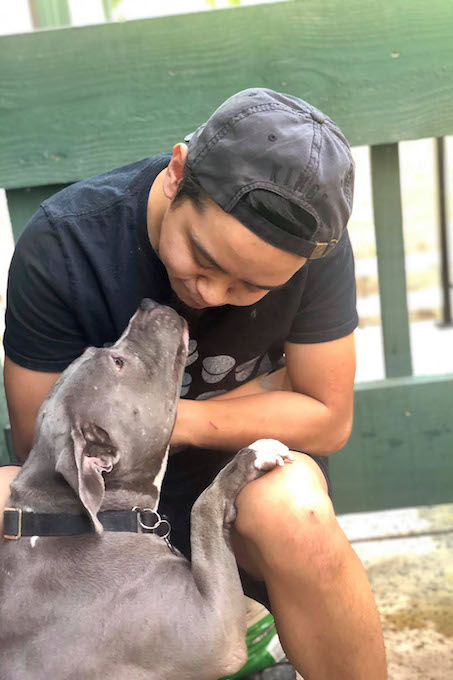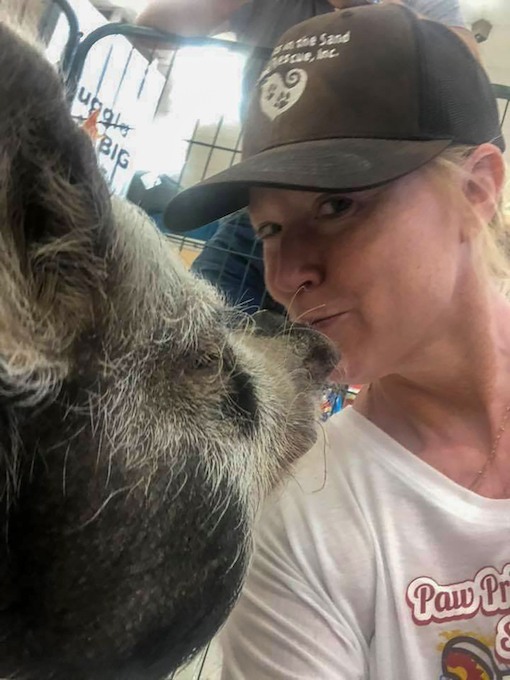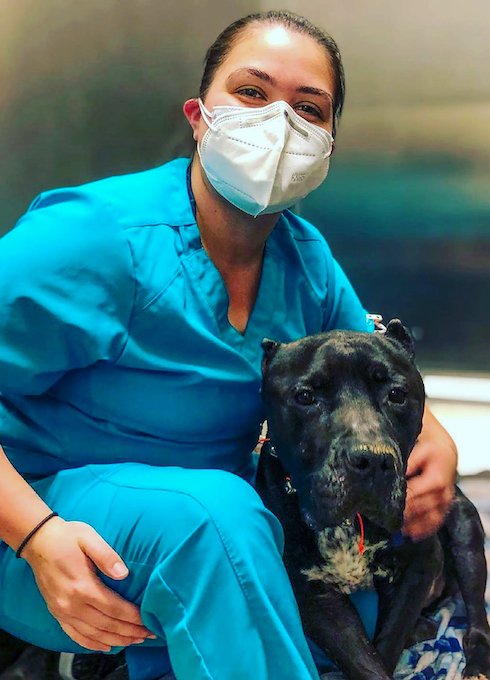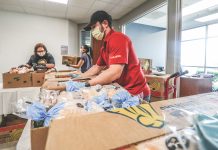
Paw Prints in the Sand Animal Rescue gives at-risk animals a second chance.
By Katherine Duncan
When Kelly Reeves saw a photo of a pug puppy with the caption, “OC Single, Ready to Mingle,” it was love at first sight. To adopt the pup, the next step was to meet her and her foster.
“I had never even heard of pet fostering,” Reeves says. “I thought high-kill shelters—aka ‘the pound’—were a scary fairy tale of my childhood. I ended up adopting her—Stella—and connecting with Stella’s foster on Facebook. When I saw all of the posts on her page networking all of the dogs that were scheduled to be euthanized, I soon learned that it was not a fairy tale. It was very real, and I had to do something about it.”

Reeves jumped in to help by donating and networking. She then began fostering, providing a loving, temporary home for animals in need until they could be adopted. This led to doing private rescues while she personally funded the associated medical costs, supplies, food and more. “I started thinking that if I am going to do this right, I should start a nonprofit and get community support for this mission,” she notes.
Reeves partnered with Monica Sederholm, and the two created Paw Prints in the Sand Animal Rescue in 2013. The foster-based organization in Newport Beach gives at-risk animals a second chance at life by providing medical care, training and forever homes. To date, it has rescued more than 530 animals—and not just dogs: cats, chinchillas, pigs, rabbits, sheep and others have all benefited.
“We rescue the pets no one else will, or at least very few will,” Reeves explains. “Most of the animals we rescue come from severe abuse and neglect and require extensive veterinary care. Many are seniors with long-term, if not terminal, health conditions. We rescue young pets that have lifelong health issues. An example of this is a kitten who was paralyzed when he was just 3 months old. These are the special needs animals that will either remain with their foster for the rest of their lives, or get adopted into a very special and highly qualified home. We also rescue dogs with a history of aggression, and rehabilitate them. We believe all animals deserve a chance no matter … their background, behavior or [what] condition they’re in.”

There are many ways to support Paw Prints’ mission, from adopting to attending its events, such as the Halloween pet costume contest with Top Dog Barkery, Bath, Boutique in Huntington Beach this October, and the Pet Photos with Santa event in December. As an entirely foster-based organization (it does not have its own facility), having individuals to look after the animals is essential. Paw Prints in the Sand provides fosters with food and supplies (tags, a collar and leash, flea medication, et cetera), basic behavioral training and a private Facebook group, and it covers all of the pets’ medical expenses.
Another option is to donate. Donations can range from money to food, supplies, medication and more. And Reeves says that there are always volunteer opportunities available. Visit pawprintsinthesand.org for more information on how to get involved.
Photos courtesy of Paw Prints in the Sand Animal Rescue




